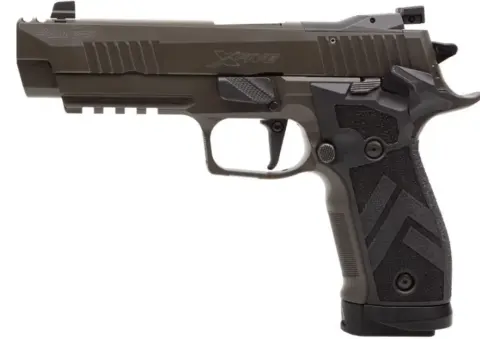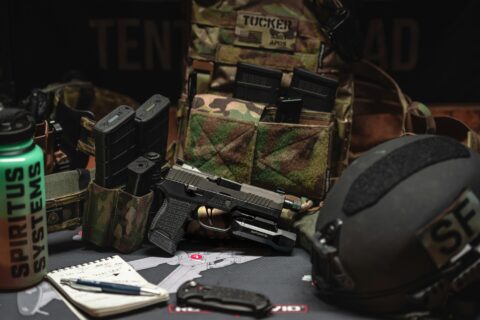The history of the bulletproof vest is both fascinating and crucial to understanding modern personal protection. Casimir Zeglen, a Polish priest, is credited with inventing the first bulletproof vest, specifically soft body armor, in the late 19th century. This early invention used layers of silk to protect against small-caliber bullets, marking a significant advancement in the field of personal defense.
Later developments saw the collaboration of multiple innovators, improving upon Zeglen’s initial design. These efforts led to the creation of the first bulletproof vest that incorporated materials like steel and Kevlar, paving the way for modern body armor used in law enforcement and the military. The history of bulletproof vests reflects the relentless pursuit of safety and innovation in protective gear, which has saved countless lives.
Powered by ongoing research and technological advancements, bulletproof vests continue to play a vital role in modern law enforcement, military applications, and personal protection. Understanding when bulletproof vests were invented and their origins allows us to appreciate the profound impact these inventions have had on personal safety and the evolution of body armor technology.
Historical Development of Bulletproof Vests
The development of bulletproof vests has been influenced by various technological advancements, material innovations, and the critical needs arising from conflicts and law enforcement requirements. The journey began with simple protective designs and evolved into highly sophisticated tactical bulletproof vests and ballistic armor used by military personnel and police officers.
Early Innovations and Inventors
Bulletproof vests initially emerged in the late 19th and early 20th centuries, during a time when advancements in firearms necessitated better protection. Casimir Zeglen, a Polish priest, created one of the first modern vests using multiple layers of silk. His invention was inspired by silk’s ability to dissipate the energy of a bullet, a significant discovery in personal protection.
Around the same time, George E. Goodfellow, an American doctor and a pioneer in forensic pathology, demonstrated how a silk handkerchief could stop a bullet. Another significant figure, Jan Szczepanik, known as the “Polish Edison,” experimented with body armor that incorporated layers of silk and other materials. These early innovators laid the groundwork for the modern bulletproof vest, which would later incorporate advanced materials like Kevlar.
Advancements During Wars
World War I marked significant progress in the development of bulletproof vests. The military bulletproof vest, or flak jacket, made from heavy steel plates, was developed to protect soldiers from shrapnel and explosive projectiles. These vests were cumbersome but provided essential protection on the battlefield.
In World War II, further advancements were made with the introduction of ballistic nylon, a material developed by DuPont. This synthetic fiber offered improved flexibility and weight reduction, making it more practical for soldiers engaged in combat. The use of flak jackets by aircrew became standard practice, highlighting the importance of bulletproof vests in military applications and the ongoing evolution of body armor.
Modern Materials and Technological Evolution
The discovery of Kevlar by Stephanie Kwolek in the 1960s revolutionized bulletproof vests. Kevlar, a synthetic fiber known for its high tensile strength-to-weight ratio, offered unrivaled strength and lightness. This breakthrough allowed for the creation of soft armor that could be worn comfortably by police officers and other law enforcement agencies, significantly improving their safety and mobility. The modern police bulletproof vest, often equipped with ceramic plates or other composite materials, is a direct result of these innovations.
Subsequent developments in synthetic fibers and polymer technology have further enhanced the effectiveness and comfort of modern vests. Materials like ultra-high-molecular-weight polyethylene (UHMWPE) and Dyneema now provide even greater protection while minimizing weight, contributing to the evolution of tactical bulletproof vests. These materials are often used in conjunction with advanced armor plates to provide protection against high-caliber rounds and armor-piercing bullets.
Design and Effectiveness
Bulletproof vests are intricately designed to offer flexible protection while maintaining a lightweight structure. They utilize advanced materials and are tested rigorously to meet specific regulatory standards. The integration of trauma plates, soft armor, and modular designs has allowed these vests to be adapted for various operational needs, whether in military combat zones, SWAT operations, or routine police duties.
Structure and Materials
Bulletproof vests are engineered with multiple layers of high-strength fibers. Kevlar, a widely used fabric in these vests, provides excellent impact resistance due to its unique weave and thickness. The multiple layers in the vest create a network that dissipates the energy of bullets, offering substantial protection without being overly heavy. In high-risk scenarios, additional armor plates made of ceramic, steel, or composite materials can be inserted into the vest to provide enhanced protection against rifle rounds and armor-piercing bullets.
This balance of protection and weight makes these vests practical for law enforcement officers, military personnel, and security professionals who need to wear them for extended periods. The modular nature of modern vests also allows for customization based on the threat level, ensuring maximum protection without compromising on mobility.
Protective Capabilities and Limitations
These vests primarily protect against handgun ammunition, such as the .38 special, which is common in law enforcement encounters. Rifle threats present more challenges due to higher energy bullets, and while some vests provide a certain level of rifle protection, they are often heavier and may require additional trauma plates. Blunt trauma from impacts can still occur even if bullets don’t penetrate, making it crucial to consider the overall design and materials used in the vest.
Despite limitations in certain scenarios, bulletproof vests significantly reduce the risk of fatal injuries from firearm threats. They are a critical piece of body armor for military personnel, police officers, and other security personnel, ensuring their safety in high-risk situations.
Regulation and Standards
The National Institute of Justice (NIJ) sets the benchmark for bulletproof vests in the United States. Each tactical bulletproof vest undergoes rigorous ballistic testing to ensure it can withstand specified types and ranges of firearm threats. Compliance with NIJ standards ensures the vests are reliable and effective, providing a crucial layer of protection for those who serve in dangerous environments.
These regulations are pivotal as they dictate the effectiveness and operational deployment of bulletproof vests, safeguarding the lives of military personnel, law enforcement officers, and civilians who rely on them for protection. The continuous improvement of standards and testing methods reflects the evolving nature of threats and the need for ever-better protective solutions.
Equip Yourself with the Best Protection
At Minutemen Defense LLC, we believe in providing top-quality body armor to ensure your safety and peace of mind. Our body armors are designed with the latest technology to offer maximum protection without compromising on comfort. Whether you need a tactical bulletproof vest for high-risk operations or a concealed vest for everyday protection, we have the right solution for you. Don’t wait until it’s too late—secure your safety today by choosing from our wide range of reliable and durable body armors. Visit our store now and take the first step towards unparalleled protection.
Signup to newsletter
Subscribe to receive the latest blog posts to your inbox every week.
By subscribing you agree to our Privacy Policy.

